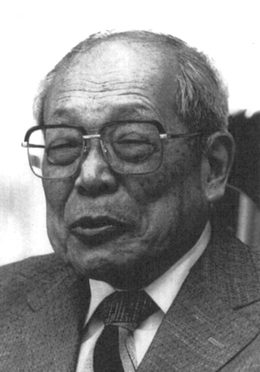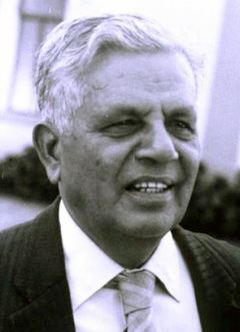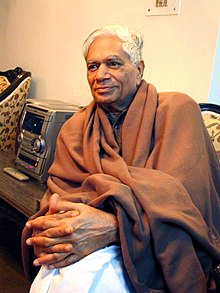
A torana is a free-standing ornamental or arched gateway for ceremonial purposes in Hindu, Buddhist and Jain architecture of the Indian subcontinent. Toranas can also be widely seen in Southeast Asia and parts of East Asia. Chinese Shanmen gateways, Japanese torii gateways, Korean Iljumun and Hongsalmun gateways, Vietnamese Tam quan gateways, and Thai Sao Ching Cha were derived from the Indian torana. They are also referred to as vandanamalikas.

In Buddhism, Avalokiteśvara, also known as Lokeśvara and Chenrezig, is a tenth-level bodhisattva associated with great compassion (mahakaruṇā). He is often associated with Amitabha Buddha. Avalokiteśvara has numerous manifestations and is depicted in various forms and styles. In some texts, he is even considered to be the source of all Hindu deities.

Hinduism in Southeast Asia had a profound impact on the region's cultural development and its history. As the Indic scripts were introduced from India, people of Southeast Asia entered the historical period by producing their earliest inscriptions around the 1st to 5th century CE. Today, Hindus in Southeast Asia are mainly Overseas Indians and Balinese. There are also Javanese and Balamon Cham minority in Cambodia and south central Vietnam who also practice Hinduism.

Greater India, also known as the Indian cultural sphere, the Indosphere, or the Indic world, is an area composed of many countries and regions in South, East Asia and Southeast Asia that were historically influenced by Indian culture, which itself formed from the various distinct indigenous cultures of these regions. Specifically Southeast Asian influence on early India had lasting impacts on the formation of Hinduism and Indian mythology. Hinduism itself formed from various distinct folk religions, which merged with Brahmanism after the Vedic period. The term Greater India, as a reference to the Indian cultural sphere, was popularised by a network of Bengali scholars in the 1920s. It is an umbrella term encompassing the Indian subcontinent and surrounding countries, which are culturally linked through a diverse cultural cline. These countries have been transformed to varying degrees by the acceptance and introduction of cultural and institutional elements from each other. Since around 500 BCE, Asia's expanding land and maritime trade had resulted in prolonged socio-economic and cultural stimulation and diffusion of Buddhist and Hindu beliefs into the region's cosmology, in particular in Southeast Asia and Sri Lanka. In Central Asia, the transmission of ideas was predominantly of a religious nature.

The Mahājanapadas were sixteen kingdoms or oligarchic republics that existed in ancient India from the sixth to fourth centuries BCE, during the second urbanisation period.

Hajime Nakamura was a Japanese Orientalist, Indologist, philosopher and academic of Vedic, Hindu and Buddhist scriptures.
This is an introduction to some of the books and novels written about Southeast Asia.

Shikaripura Ranganatha Rao, commonly known as Dr. S. R. Rao, was an Indian archaeologist who led teams credited with discoveries of a number of Harappan sites, including the port city Lothal and Bet Dwarka in Gujarat.

Govind Chandra Pande was a well-known Indian scholar, philosopher and historian of the Vedic and the Buddhist periods. He served as professor of ancient history and vice-chancellor at Jaipur and Allahabad universities. He was also the chairman of the Indian Institute of Advanced Study, Simla for several years, the Chairman of Allahabad Museum Society and the Chairman of Central Tibetan Society, Sarnath Varanasi.

Satya Vrat Shastri was an Indian Sanskrit scholar, writer, grammarian and poet. He wrote three Mahakavyas, three Khandakavyas, one Prabandhakavyas and one Patrakavya and five works in critical writing in Sanskrit. His important works are Ramakirtimahakavyam, Brahattaram Bharatam, Sribodhisattvacharitam, Vaidika Vyakarana, Sarmanyadesah Sutram Vibhati, and "Discovery of Sanskrit Treasures" in seven volumes.
Biblia Impex India is a New Delhi–based book distribution company that specializes in books on Indology, Hinduism and Buddhism founded by the influential Indian historian Sita Ram Goel in 1963. It is currently managed by Goel's son Pradeep Kumar Goel.

India and Indonesia established diplomatic relations in 1951. Both countries are neighbours, India's Andaman and Nicobar Islands share a maritime border with Indonesia along the Andaman Sea.

India–Malaysia relations, also called Indian-Malaysian relations or Indo-Malaysian relations, are the bilateral foreign relations between India and Malaysia. India has a high commission in Kuala Lumpur, and Malaysia has a high commission in New Delhi and a consulate general in Chennai and Mumbai. Both countries are full members of the Commonwealth of Nations, Asian Union and G15. India and Malaysia are also connected by various cultural and historical ties that date back to antiquity. The two countries are on excellently friendly terms with each other seeing as Malaysia is home to a strong concentration of Indian immigrants. Mahathir Mohamad, the fourth and longest serving Prime Minister of Malaysia has Indian ancestry. On trade front their bilateral trade volume stands at $10.5 billion and is poised to reach $25 billion by 2020.

The Heart-dhāraṇī of Avalokiteśvara-ekadaśamukha Sūtra is a Buddhist text first translated from Sanskrit into Chinese on the 28th day of the third lunar month of 656 CE, by Xuanzang. The title in Tibetan language is Spyan-ras-gzigs-dbang-phyug-shal bcu-gcig-pa, while the Sanskrit title recovered from the Tibetan translation is Avalokiteśvara ekadaśamukha dhāraṇī. Alternatively, the sutra's title has been translated as the Eleven-Faced Avalokitesvara Heart Dharani Sutra by Professor Ryuichi Abe.

India–Thailand relations, also called Indian-Thai relations or Indo-Thai relations, are the bilateral relations between India and Thailand. Relations were established in 1947, soon after India gained independence. Priests have provided a cultural link between the two countries since 1500 BCE. India shares a long sea border with Thailand as India's Andaman and Nicobar Islands share a maritime border with Thailand along the Andaman Sea. Since 2001, both countries have witnessed growing warmth, increasing economic and commercial links, exchange of high-level visits, and the signing of various agreements leading to a further intensification of relations. Thailand and India are cooperating in various multilateral fora like India's dialogue partnership with ASEAN, the ASEAN Regional Forum (ARF), and the East Asia Summit, the sub-regional grouping BIMSTEC involving Bangladesh, India, Sri Lanka, Thailand, Myanmar, Nepal and Bhutan, and trilateral transport linkages with Thailand, Myanmar and India. India is a member of the Asia Cooperation Dialogue (ACD) initiated by Thailand in 2002 and of the Mekong–Ganga Cooperation (MGC), a group of six countries.
Hari Dutt Sharma is a Sanskrit poet who won President certificate of honor in 2015 and the Sahitya Akademi Award for Sanskrit in 2007 for his work of poetry, Lasallatika.
Raghu Vira was an Indian linguist, scholar, politician, and member of the Constituent Assembly. He was one of the editors of the critical edition of the Mahabharata which was compiled at the Bhandarkar Oriental Research Institute, Pune. More specifically he was the editor of the fourth Book of the critical edition of the Mahabharata i.e. the Virataparvan.

Cambodia–India relations, also known as Cambodian-Indian relations, are the bilateral relations between the Kingdom of Cambodia and the Republic of India. Cambodia has an embassy in New Delhi, and India has an embassy in Phnom Penh.
A dharani pillar, sutra pillar, or jingchuang is a type of stone pillar engraved with dhāraṇī-sūtras or simple dhāraṇī incantations that is found in China. Dharani pillars were usually erected outside Buddhist temples, and became popular during the Tang dynasty (618–907).
Keshab Chandra Dash, is a scholar and author from Odisha.














